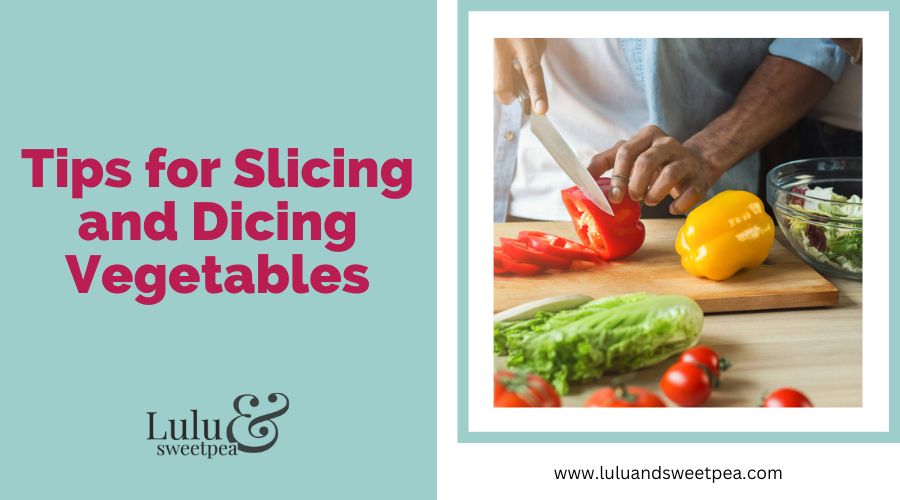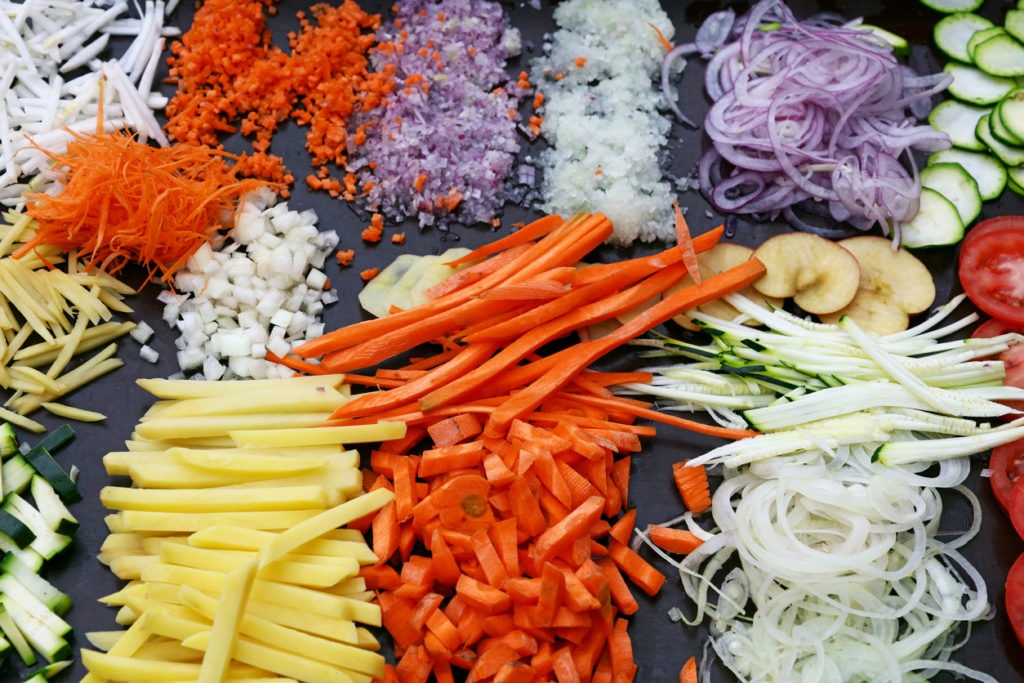There’s no doubt that vegetables are an important part of a healthy diet. But sometimes, preparing them can be a bit daunting. Not to worry – with a little know-how, you can easily slice and dice your veggies into the perfect pieces for any dish. Here are some tips to help you get started.
1. Use a sharp knife
One of the most important tips for slicing and dicing vegetables is to use a very sharp knife. A dull or unsharpened knife will not only make the task more difficult, but it can also be dangerous. A sharp knife is less likely to slip and will make cleaner cuts.
The best way to keep your knives sharp is to use a sharpening stone regularly. Sharpening stones come in a variety of shapes and sizes, but they all work by gradually wearing down the blades of your knives. As you use your sharpening stone, you’ll want to hold the blade at a consistent angle and apply even pressure.
2. Choose the right knife
Not all knives are created equal. For slicing and dicing vegetables, you will want to use a chef’s knife. These knives are designed for chopping and have a wide blade that is ideal for slicing through vegetables.
A chef’s knife is an all-purpose kitchen tool. It can be used to slice meat, chop vegetables, and ensure that they are cut up to the right sizes. The blade is typically between six and eight inches long, and the wide, blunt edge is ideal for chopping.
The sharp point of the chef’s knife can be used for precision slicing. When choosing a chef’s knife, it is important to select one that is comfortable to hold and that has a blade that is made of high-quality steel. With proper care, a chef’s knife can last for many years.
3. Cut against a cutting board
When it comes to preparing food, safety should always be a top priority. One way to help reduce the risk of injury is to use a cutting board when slicing and dicing vegetables. Cutting boards provide a stable surface that helps to keep fingers safe.
Also, cutting boards can also make it easier to get evenly sized pieces. When cutting against a cutting board, the blade is less likely to slip, making it easier to control the size of the pieces. As a result, cutting boards can help to make food preparation safer and more efficient.
4. Use the right cutting technique
When it comes to cutting vegetables, there are two main techniques that you can use: the chop and the dice. The chop is a more basic technique that simply involves chopping the vegetable into small pieces. This is a good option if you’re in a hurry or if you’re not looking for precision.
The dice, on the other hand, involves cutting the vegetable into uniform cubes. This is a more time-consuming technique, but it results in more consistent pieces. If you’re making a dish that requires precise cuts, like a stir-fry or a salad, then dice is the way to go. But if you’re just looking to get the job done quickly, then chop is the way to go.
5. Slice thick pieces first
Before you begin chopping your vegetables, it is important to take a moment to assess the size of the pieces you will need. If you are working with large pieces of vegetables, you will want to slice them into thick pieces first before you diced them into smaller pieces. This will help to prevent the vegetable from slipping out of your hand as you chop it and make it easier to get evenly sized pieces.
Once you have sliced the vegetables into thick pieces, you can then begin diced them into smaller pieces. When chopping vegetables, always use a sharp knife and exercise caution to prevent injuries.
6. Dice small pieces last
Once you have chopped the larger pieces of vegetables into smaller pieces, you can then dice them into even smaller pieces if desired.
Dicing is a basic cooking skill that is used to create uniform pieces of food. This technique is often used to prep vegetables for salads or stir-fries. When dicing, it is important to hold the food item in one hand and use the other hand to guide the knife.
The key is to make small, precise cuts. This will result in evenly sized pieces that will cook evenly. Additionally, using a sharp knife is essential for safety. A dull knife usually tends to slip, and this more likely leads to a kitchen accident.
7. Use a julienne cutter for long, thin strips
If you want to cut vegetables into long, thin strips, then you will want to use a julienne cutter. This kitchen tool is specifically designed for this purpose and will produce perfectly even strips of vegetables every time.
Julienne cutters come in a variety of sizes, so you can choose one that is best suited for the task at hand. When using a julienne cutter, it is important to use a cutting board that is large enough to catch all of the vegetable scraps.
8. Use a mandolin cutter for uniform slices
A mandolin cutter is a kitchen tool that can be used to create uniform vegetable slices. This is accomplished by using a sharp blade to evenly shave vegetables into thin pieces. Mandolin cutters are an especially useful tool when preparing dishes that require thinly sliced vegetables, such as stir-fries or salads. They can also be used to create decorative garnishes for plated meals.
While mandolin cutters can be very helpful in the kitchen, they can also be quite dangerous. The blades are incredibly sharp, and it is easy to accidentally cut oneself while using one. For this reason, it is important to use caution and care when operating a mandolin cutter.
Conclusion
One of the most important skills in the kitchen is learning how to properly slice and dice vegetables. Not only does it make food prep go faster, but it also ensures that your ingredients are evenly cooked.


